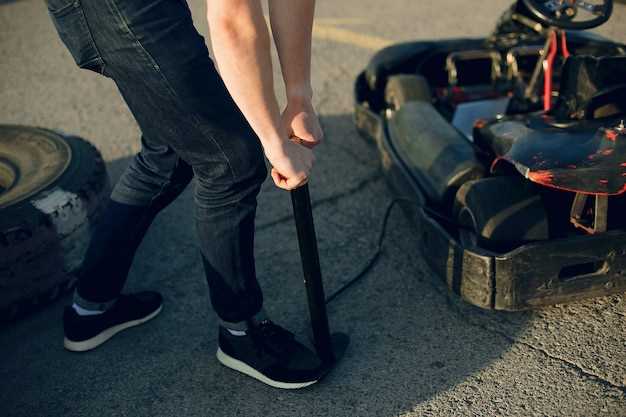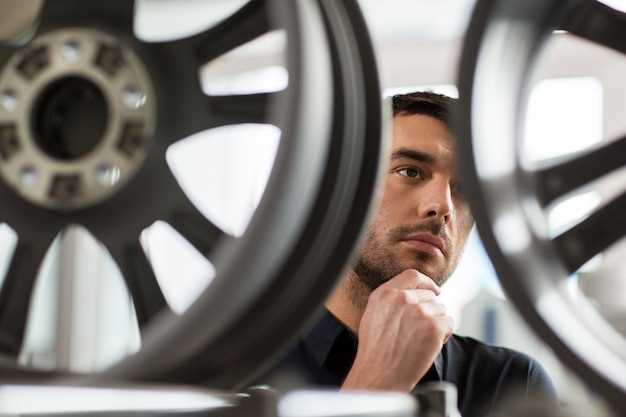
When it comes to enhancing off-road performance, selecting the right differential is crucial. Off-road terrains often present unique challenges, requiring vehicles to maintain traction on uneven, slippery, or rocky surfaces. A suitable differential ensures that power is effectively distributed to the wheels, minimizing the risk of losing grip and maximizing your vehicle’s capability to navigate rough landscapes.
There are several types of differentials available, each designed to address specific driving conditions and needs. Understanding the differences between open, limited-slip, and locking differentials can help you make an informed choice tailored to your off-road adventures. The right differential not only enhances traction but also improves handling and stability, allowing drivers to tackle challenging environments with confidence.
In this article, we will explore the various types of differentials and discuss their advantages and disadvantages in off-road situations. By the end, you will have a clearer understanding of how to choose the best differential for your specific requirements, ultimately improving your vehicle’s off-road performance and ensuring an exhilarating driving experience.
Understanding the Types of Lockers: Which is Right for You?
Lockers are crucial components when it comes to enhancing off-road traction. They help distribute power effectively to the wheels, especially when one or more wheels encounter slippery or uneven terrain. There are several types of lockers, each with its own advantages and drawbacks. Understanding these can help you choose the right one for your off-roading needs.
Firstly, we have the mechanical lockers, also known as automatic lockers. These systems engage automatically when there is a significant difference in wheel rotation speed. When one wheel spins faster–such as on a slippery surface–the locker locks the two wheels together, distributing power evenly. Although mechanical lockers offer simplicity and reliability, they can be less predictable in tight turns on pavement, making them better suited for dedicated off-road vehicles.
Another popular option is the electronic lockers. These allow drivers to engage or disengage the locking mechanism via a switch. This gives more control, allowing for quick adjustments depending on the terrain. Electronic lockers excel in situations where precision is key, but they can be more complex and may require additional electrical system components, which could lead to potential failure.
Selectable lockers combine the features of both mechanical and electronic systems. They offer the flexibility to lock the differential when necessary and unlock it for normal driving conditions. This type is highly favored by off-road enthusiasts who need to navigate through various terrains. However, selectable lockers can be costly and may involve a more complex installation process.
Lastly, there are limited-slip differentials (LSD), which provide a middle ground between an open differential and a full locker. LSD uses friction to limit wheel slip, allowing some degree of wheel differentiation while still enhancing traction. They are well-suited for mixed-use vehicles but may not provide the same level of traction as full lockers in extreme off-road conditions.
Ultimately, the choice between these types of lockers depends on your off-roading style, the terrain you frequently navigate, and the balance you wish to achieve between on-road drivability and off-road capabilities. Assess your needs carefully to determine which locker will enhance your vehicle’s performance and boost your off-road adventures.
Assessing Gear Ratios for Optimal Off-Road Performance

When selecting a differential for off-road vehicles, understanding gear ratios is crucial for enhancing traction and overall performance. Gear ratios determine how effectively power is transferred from the engine to the wheels, impacting acceleration, torque, and the vehicle’s ability to navigate challenging terrains.
A lower gear ratio provides more torque to the wheels, which is advantageous for climbing steep inclines, navigating through mud, or traversing rocky surfaces. It allows the vehicle to exert more force without requiring excessive speed, ensuring that the tires maintain grip and do not spin out easily. This is particularly important in off-road situations where maintaining traction is vital for avoiding stalling or getting stuck.
Conversely, a higher gear ratio can be beneficial in situations that require higher speed over flatter terrain. However, in most off-road scenarios, this can lead to a loss of torque and reduced ability to climb or maneuver effectively. Therefore, selecting the right gear ratio is a balance between required torque for specific off-road challenges and maintaining adequate speed when necessary.
The differential plays a significant role in this equation. Limited-slip differentials and locking differentials can further augment the effectiveness of the chosen gear ratio by ensuring that power is distributed appropriately to the wheels with the most traction. This synergy between gear ratio and differential type enhances the vehicle’s off-road capabilities, allowing for improved control and performance in a variety of conditions.
Ultimately, assessing gear ratios in conjunction with the type of differential employed will equip off-road enthusiasts with the tools they need to master difficult terrains, ensuring that each excursion is not only thrilling but also safe and efficient.
Installation Considerations: DIY vs Professional Help

When it comes to installing lockers for enhanced off-road traction, one of the initial decisions vehicle owners face is whether to take on the project themselves or seek professional assistance. Each option has its advantages and considerations.
DIY Installation can be a rewarding experience for those with a solid understanding of automotive mechanics. By choosing to install lockers on your own, you can save on labor costs and take the time to learn about your vehicle’s drivetrain components. However, it is essential to recognize the complexity of the installation process, which often involves disassembling the differential and ensuring precise alignment. A mistake during this phase can lead to significant issues, including poor performance or even component failure.
For DIY enthusiasts, it is crucial to have the right tools and to thoroughly study the installation guidelines provided by the locker manufacturer. Online forums and videos can serve as valuable resources, but ensure they are reputable and relevant to your specific vehicle model. Understand that time commitment is variable; depending on your experience level and availability, this process can take anywhere from a few hours to an entire weekend.
On the other hand, opting for professional installation can alleviate the stress associated with uncertainty and technical missteps. Expert mechanics are familiar with the nuances of different locker types and have the experience necessary to ensure proper installation. They can also provide valuable insights on the best options based on your driving style and terrain preferences. However, this convenience comes at a cost, both in terms of labor fees and potential delays in scheduling an appointment.
Ultimately, the decision between DIY and professional help should hinge on your confidence in your mechanical skills and the importance of a precise installation for achieving optimal off-road traction. Weigh the costs, the complexity of the task, and your ultimate off-road goals to make an informed choice that suits your needs.




